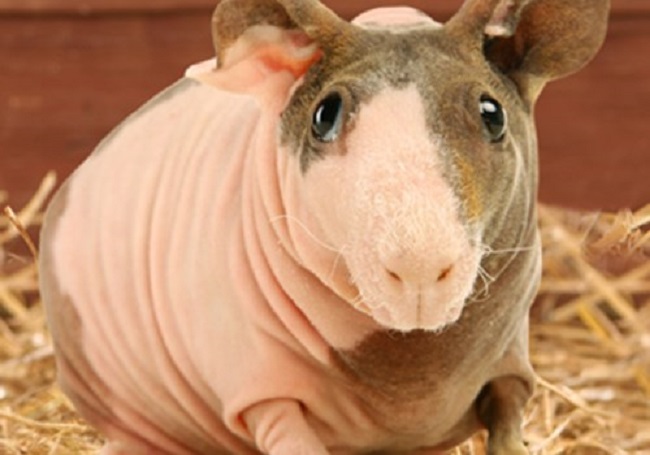In the world of small pets, few breeds are as unique and fascinating as the Skinny Pig. This hairless breed of guinea pig offers a distinctive experience for pet owners.
Known for their charming personalities and unusual appearance, Skinny Pigs have captured the hearts of pet enthusiasts worldwide.
In this comprehensive guide, we’ll explore everything about the Skinny Pig breed, from their origin to their care needs and health facts.

The Origin of the Skinny Pig Breed
The Skinny Pig breed is a result of a happy accident in the lab. In the 1970s, laboratories conducting dermatology studies bred a hairless guinea pig for their experiments.
Read Also:
This hairless breed, the result of a spontaneous genetic mutation, was later mixed with haired guinea pigs. The outcome of this breeding resulted in the Skinny Pigs we know today.
Physical Characteristics of the Skinny Pig
Skinny Pigs are renowned for their near hairlessness, bearing a striking resemblance to miniature hippos. They retain small patches of fur on their muzzles, feet, and legs, while the rest of the body is covered in smooth, bare skin. Skinny Pigs come in a variety of skin colors and patterns, just like their furry guinea pig counterparts.
Behavior and Temperament of Skinny Pigs
Despite their unique appearance, Skinny Pigs possess the same playful and social temperament found in other guinea pig breeds.
They are known for their curious nature, gentle demeanor, and love for social interaction, making them excellent companions for both children and adults.
Skinny Pig Care Guide
Diet: Skinny Pigs require a diet rich in vitamin C, including a mixture of commercial guinea pig pellets, fresh fruits, vegetables, and unlimited access to hay.
Housing: As social creatures, Skinny Pigs thrive in pairs or small groups. Their habitat should be spacious, clean, and well-ventilated. Include hideaways for them to retreat when they need privacy.
Healthcare: Due to their lack of hair, Skinny Pigs are more susceptible to temperature changes and skin issues. Regular vet check-ups are crucial to monitor their health.
Life Expectancy and Health of Skinny Pigs
Typically, with proper care, Skinny Pigs can live between 5 to 8 years, although some may live even longer. They’re generally healthy but, due to their hairlessness, they’re susceptible to certain health issues.
Skin irritations, fungal infections, and sunburn are some problems that Skinny Pigs may face. Regular health check-ups and careful monitoring of their skin can help catch and treat any issues early.
Handling and Interaction with Skinny Pigs
Skinny Pigs are social and generally enjoy interaction and cuddling. However, their sensitive skin requires gentle handling.
It’s essential to teach children to be careful when handling them to avoid skin damage. Always ensure your hands are clean and free of lotions or creams that could irritate the pig’s skin.
Temperature Control for Skinny Pigs
Temperature regulation is vital for Skinny Pigs due to their lack of fur. They should be kept in a draft-free environment with a temperature range of 68 to 79 degrees Fahrenheit. In colder months, providing warm bedding can help them stay cozy.
Feeding Essentials for Skinny Pigs
Providing fresh water and vitamin C-rich food is crucial for Skinny Pigs. Due to their higher metabolism, they may eat more than their furry counterparts.
Fresh hay should make up the majority of their diet, supplemented with quality guinea pig pellets and fresh fruits and vegetables.
Skin Care for Skinny Pigs
Given their lack of hair, Skinny Pigs’ skin needs particular attention. Regular bathing with gentle, hypoallergenic soap can help keep their skin healthy. Avoid frequent bathing to prevent skin dryness.
Read Also:
Conclusion
Skinny Pigs, with their distinctive appearance and friendly personalities, make wonderful pets for those ready to meet their unique needs.
A well-cared-for Skinny Pig can bring joy, companionship, and a touch of the extraordinary into any home. With the right care and attention, these unique creatures can thrive and form a strong bond with their human companions.
























